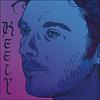Take a photo of a barcode or cover
An entertaining story, though the historical factuality is somewhat questionable as Welch romanticizes the Native American lifestyle and is also infected by the Western anthropological perspective.
read it for my History class, and I'm so glad my professor assigned this because otherwise I don't think I would have known of this book. I loved reading this and my heart ached for every character. I don't even know what to do with my life right now. What a horrible thing to happen.
adventurous
emotional
medium-paced
Plot or Character Driven:
A mix
Strong character development:
Complicated
Loveable characters:
Complicated
Life as a Native American, just as the wave of colonisation crashes. Illuminates a tragically lost world.
Emotionally, I struggled with this book. There's a difference between violent, penetrating details and violent detail about penetration, and the author seems to have missed that. There's lots of rape in this book, and the violent details are not necessary to the main points being made in the book. Fool's Crow is more about the oppression and marginalization of the Blackfoot tribe than about the oppression of women, as attested to by the inconsistent narrations and memories of Red Paint.
reflective
slow-paced
Strong character development:
Complicated
Loveable characters:
Complicated
Diverse cast of characters:
Yes
Flaws of characters a main focus:
No
It is easy to lose yourself in this evocative story of 1870 Montana. Welch has written a compelling protagonist in Fools Crow, who embarks on a heroes journey in a time of tumultuous change (and ultimately destruction). Given the setting, it was much more upbeat than I expected, and much more the celebration of Pikuni/Blackfeet culture and life. All of Welch's characters are rounded, and they breathe life into history, without ever feeling like less than individuals. Just a really good read.
Read for the first time in high school and reread every year or so. LOVE this book for its point of view and perspective into this tribe.
First, trigger warning: book contains two notable instances of rape/ sexual assault. This isn't criticism, just a PSA for future readers.
Welch has beautiful prose and compelling storytelling chops, I'll say that much. Plot-wise, I expected more going in, but I was pleasantly surprised. This is a character-driven book, and a domestic (and tragic) portrait of the Wild West as experienced by Blackfeet Indians in post-Civil War Montana. It's slow but not in a bad way, and it never feels hamfisted. I liked that the characters reacted like people, felt guilty, felt hopeful, felt confused about what they should feel at all, and so on. A lot of worlds disappear, and the book is permeated with this sense of water trickling out of your cupped palms. You can see where things start falling apart, and yet it happens so slowly that you keep thinking that it can still be fixed, that the things surrounding the characters every day will still be there tomorrow.
Whether you're a history buff or a fan of "Spirit: Stallion of the Cimarron," this is a great book and more than earns a spot on your reading list.
Welch has beautiful prose and compelling storytelling chops, I'll say that much. Plot-wise, I expected more going in, but I was pleasantly surprised. This is a character-driven book, and a domestic (and tragic) portrait of the Wild West as experienced by Blackfeet Indians in post-Civil War Montana. It's slow but not in a bad way, and it never feels hamfisted. I liked that the characters reacted like people, felt guilty, felt hopeful, felt confused about what they should feel at all, and so on. A lot of worlds disappear, and the book is permeated with this sense of water trickling out of your cupped palms. You can see where things start falling apart, and yet it happens so slowly that you keep thinking that it can still be fixed, that the things surrounding the characters every day will still be there tomorrow.
Whether you're a history buff or a fan of "Spirit: Stallion of the Cimarron," this is a great book and more than earns a spot on your reading list.
You know, I want to like this book. I want to want to read it. But I just don't. Both times I've read it, it has been a struggle to continue. The subject matter is interesting, the story is well-told, and there are sometimes passages that are extraordinarily effective in one way or another. But there's something lacking for me.
What I think is lacking is a sense of emotional connection. The story is told in a style that feels at times as if it has been translated into English from a Native American language (e.g., "The four-leggeds were many that day. They saw four large herds of blackhorns and several smaller herds of prairie-runners and wags-his-tails and once, on a bluff to the west, bighorns" (12), or "Then the Napikwans [white men] gave the people some of their strange food: the white sand that makes things sweet, the white powder, the bitter black drink" (16)) and this has its advantages and disadvantages. It certainly contributes to the slow pace of the book, as it takes longer to become immersed in the story when so many things have unfamiliar names that must be puzzled out. But, somewhat like reading science fiction, once those connections have been made and the adjustment has been made, it becomes much less difficult and goes a long way toward a fuller sense of immersion in the culture than might otherwise be possible. It is a recognition that the Pikuni (Blackfeet) have different patterns of thought than white English speakers and an acknowledgment of the way that peculiarities of language shape our consciousness and our actions.
As much as this style makes possible a greater immersion into a larger sense of culture, it works against immersion into the experience of the characters. The story focuses on Fools Crow (initially known as White Man's Dog) and his tribal community, but although I am told what Fools Crow thinks and feels, I rarely feel what it is like to be in his position and consequently have trouble empathizing with his individual situation. Perhaps this is intentional. Perhaps it is a way to emphasize community over individual or a way to provide a more mythic sensibility.
This would be fitting, after all, for, beyond Fools Crow, the narrative tells the story of the Blackfeet people and their interactions with Napikwan (white people). The white people are encroaching upon their land, killing their animals, threatening violence (and, finally, enacting violence in a massacre of an entire village). While ordinary life goes on in the Lone Eaters' community, there is a constant undercurrent of tension about what to do regarding the white people. Should they stand up and fight and risk being wiped out? Should they try to compromise and risk losing their land, their identity, their spirit? A small band of young men chooses to fight, killing white people where they find them, while the majority of the people follow their older leaders as they advocate waiting and trying to work with the white men. In the end, the choice turns out to be meaningless, though. The decision is taken out of their hands by the spread of smallpox and the impatience and anger of the white men (especially in response to the actions of the militant young men).
Welch's commentary on this situation provides a strong argument for the presence of the very book he is writing. Fools Crow has a vision of the future in which his people are much diminished, impoverished, living in the midst of white people, with no buffalo and none of their current land. He feels at first that, knowing this fate, there is nothing he can do for his people, but Feather Woman, his guide in this vision, tells him instead that he can do something. She says, "You can prepare them for the times to come. If they make peace within themselves, they will live a good life in the Sand Hills [the afterlife]. There they will go on to live as they always have. Things will not change" (359). He counters by saying, "I do not fear for my people now . . . But I grieve for our children and their children, who will not know the life their people once lived. I see them on the yellow skin and they are dressed like the Napikwans, they watch the Napikwans and learn much from them, but they are not happy. They lose their own way." And in her final comment she reveals Welch's role as storyteller/author: "Much will be lost to them . . . But they will know the way it was. The stories will be handed down, and they will see that their people were proud and lived in accordance with the Below Ones, the Underwater People--and the Above Ones" (359-360). In this brief scene, Welch shows that this novel is not a novel of the Vanishing Indian, but a novel designed to help support and sustain American Indians, to provide a link between the lost past, the present, and the future.
In this light, the final pages of the novel are complicated. After the smallpox has passed and the people have survived another season, during a ceremony led by Mik-api, Fools Crow begins to feel hopeful: "Fools Crow . . . felt his step become lighter. He felt in his heart, in the rhythm of the drum, a peculiar kind of happiness--a happiness that sleeps with sadness. . . . For even though he was, like Feather Woman, burdened with the knowledge of his people, their lives and the lives of their children, he knew they would survive, for they were the chosen ones" (390). This moment is bittersweet but ultimately hopeful, looking forward to a future that is different but still good, as long as the stories and the people remain. Welch does not end the novel with this image, however. He ends with this passage:
"Far from the fires of the camps, out on the rain-dark prairies, in the swales and washes, on the rolling hills, the rivers of great animals moved. Their backs were dark with rain and the rain gathered and trickled down their shaggy heads. Some grazed, some slept. Some had begun to molt. Their dark horns glistened in the rain as they stood guard over the sleeping calves. The blackhorns had returned and, all around, it was as it should be" (391).
This image of the buffalo, the world as it should be, seems so hopeful, seems to provide a sense of peace looking into the future. But the reader knows that this state of affairs cannot last. This final image serves to remind us all of what is still to be lost, of what cannot be retrieved.
What I think is lacking is a sense of emotional connection. The story is told in a style that feels at times as if it has been translated into English from a Native American language (e.g., "The four-leggeds were many that day. They saw four large herds of blackhorns and several smaller herds of prairie-runners and wags-his-tails and once, on a bluff to the west, bighorns" (12), or "Then the Napikwans [white men] gave the people some of their strange food: the white sand that makes things sweet, the white powder, the bitter black drink" (16)) and this has its advantages and disadvantages. It certainly contributes to the slow pace of the book, as it takes longer to become immersed in the story when so many things have unfamiliar names that must be puzzled out. But, somewhat like reading science fiction, once those connections have been made and the adjustment has been made, it becomes much less difficult and goes a long way toward a fuller sense of immersion in the culture than might otherwise be possible. It is a recognition that the Pikuni (Blackfeet) have different patterns of thought than white English speakers and an acknowledgment of the way that peculiarities of language shape our consciousness and our actions.
As much as this style makes possible a greater immersion into a larger sense of culture, it works against immersion into the experience of the characters. The story focuses on Fools Crow (initially known as White Man's Dog) and his tribal community, but although I am told what Fools Crow thinks and feels, I rarely feel what it is like to be in his position and consequently have trouble empathizing with his individual situation. Perhaps this is intentional. Perhaps it is a way to emphasize community over individual or a way to provide a more mythic sensibility.
This would be fitting, after all, for, beyond Fools Crow, the narrative tells the story of the Blackfeet people and their interactions with Napikwan (white people). The white people are encroaching upon their land, killing their animals, threatening violence (and, finally, enacting violence in a massacre of an entire village). While ordinary life goes on in the Lone Eaters' community, there is a constant undercurrent of tension about what to do regarding the white people. Should they stand up and fight and risk being wiped out? Should they try to compromise and risk losing their land, their identity, their spirit? A small band of young men chooses to fight, killing white people where they find them, while the majority of the people follow their older leaders as they advocate waiting and trying to work with the white men. In the end, the choice turns out to be meaningless, though. The decision is taken out of their hands by the spread of smallpox and the impatience and anger of the white men (especially in response to the actions of the militant young men).
Welch's commentary on this situation provides a strong argument for the presence of the very book he is writing. Fools Crow has a vision of the future in which his people are much diminished, impoverished, living in the midst of white people, with no buffalo and none of their current land. He feels at first that, knowing this fate, there is nothing he can do for his people, but Feather Woman, his guide in this vision, tells him instead that he can do something. She says, "You can prepare them for the times to come. If they make peace within themselves, they will live a good life in the Sand Hills [the afterlife]. There they will go on to live as they always have. Things will not change" (359). He counters by saying, "I do not fear for my people now . . . But I grieve for our children and their children, who will not know the life their people once lived. I see them on the yellow skin and they are dressed like the Napikwans, they watch the Napikwans and learn much from them, but they are not happy. They lose their own way." And in her final comment she reveals Welch's role as storyteller/author: "Much will be lost to them . . . But they will know the way it was. The stories will be handed down, and they will see that their people were proud and lived in accordance with the Below Ones, the Underwater People--and the Above Ones" (359-360). In this brief scene, Welch shows that this novel is not a novel of the Vanishing Indian, but a novel designed to help support and sustain American Indians, to provide a link between the lost past, the present, and the future.
In this light, the final pages of the novel are complicated. After the smallpox has passed and the people have survived another season, during a ceremony led by Mik-api, Fools Crow begins to feel hopeful: "Fools Crow . . . felt his step become lighter. He felt in his heart, in the rhythm of the drum, a peculiar kind of happiness--a happiness that sleeps with sadness. . . . For even though he was, like Feather Woman, burdened with the knowledge of his people, their lives and the lives of their children, he knew they would survive, for they were the chosen ones" (390). This moment is bittersweet but ultimately hopeful, looking forward to a future that is different but still good, as long as the stories and the people remain. Welch does not end the novel with this image, however. He ends with this passage:
"Far from the fires of the camps, out on the rain-dark prairies, in the swales and washes, on the rolling hills, the rivers of great animals moved. Their backs were dark with rain and the rain gathered and trickled down their shaggy heads. Some grazed, some slept. Some had begun to molt. Their dark horns glistened in the rain as they stood guard over the sleeping calves. The blackhorns had returned and, all around, it was as it should be" (391).
This image of the buffalo, the world as it should be, seems so hopeful, seems to provide a sense of peace looking into the future. But the reader knows that this state of affairs cannot last. This final image serves to remind us all of what is still to be lost, of what cannot be retrieved.







